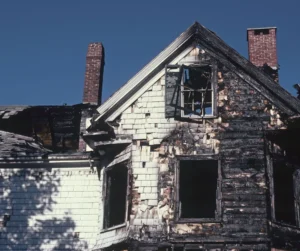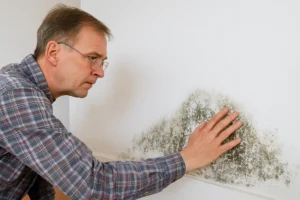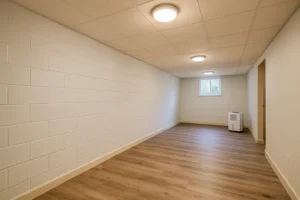You’ve spotted mold in your home. Maybe it’s spreading behind the sink or showing up as dark spots on your ceiling. As you start to research what to do next, you keep seeing two terms: mold removal and mold remediation.
They sound similar, but they’re not the same thing.
If you’re feeling confused about what service you actually need (and what you’re really paying for), you’re not alone. Knowing the difference can help you protect your home, your health, and your wallet.
In this post, we’ll break down the difference between mold removal and mold remediation, explain when each service is used, and help you make the right call.
Why Mold Is a Bigger Problem Than It Looks
Mold is a living organism—it spreads, releases spores into the air, and breaks down organic materials. What you see on the surface is often only a small part of the problem.
That’s why it’s important not just to “clean it up” but to understand what’s really happening behind the scenes.
Mold Removal vs. Mold Remediation: What’s the Difference?
Let’s start with simple definitions.
Mold Removal
Mold removal refers to the physical act of wiping, scrubbing, or cutting away mold-infested materials.
Think of it as cleaning up what you can see.
This process might include:
- Washing mold off tiles
- Removing moldy drywall or carpet
- Applying mold-killing sprays or cleaners
Mold removal is typically limited to surface cleaning. It may look like the mold is gone—but without treating the cause, it often comes back.
Mold Remediation
Mold remediation goes deeper. It’s a comprehensive process to identify, treat, and prevent mold by fixing the conditions that caused it in the first place.
A professional mold remediation service includes:
- Inspection and testing for hidden mold
- Moisture detection to find the source
- Containing affected areas to stop spread
- Safe removal of contaminated materials
- Deep cleaning and antimicrobial treatments
- Structural drying
- Final testing (if needed) to confirm clearance
Remediation doesn’t just get rid of mold—it removes the mold, treats the cause, and creates a safe, mold-resistant environment.
Why This Matters for Homeowners
If you only remove mold without dealing with what caused it, like a roof leak or high humidity, it will likely come back.
Mold remediation isn’t just about cleaning. It’s about restoring the health and safety of your home.
That’s why at Tradewinds Restoration, we specialize in full-service remediation, not quick cover-ups.
When Is Mold Removal Enough?
There are times when mold removal is all you need, typically when:
- The mold covers less than 10 square feet
- There’s no sign of moisture issues
- The mold is on a non-porous surface (like tile or glass)
- You catch it immediately after a minor spill or leak
But even in these cases, we still recommend an inspection—just to be sure it hasn’t spread behind walls or into the air.
When You Need Mold Remediation
You need full remediation when:
- Mold covers more than one area or a large space
- The source of moisture hasn’t been fixed
- People in the home are experiencing symptoms (coughing, headaches, fatigue)
- The mold keeps coming back
- It’s affecting drywall, wood, insulation, or HVAC systems
- There’s a strong musty smell and no visible mold
If you’re unsure, it’s always best to schedule a professional mold inspection to find out what’s really going on.
How Much Does Mold Remediation Cost?
At Tradewinds Restoration, we believe in being transparent with pricing.
Here’s what you can expect in San Diego:
- Mold inspections: Start at $239
- Remediation services: Range from $1,800 to $10,000+, depending on severity, square footage, and how deep the mold has spread
We’ll walk you through the process, explain every cost, and work with you to make the best decision for your situation.
Want more info? Visit our full Mold Remediation service page
Is Mold Remediation Covered by Insurance?
Homeowners’ insurance policies offer protection against various unforeseen events, but their coverage for mold-related issues can be nuanced and depends heavily on the cause of the mold growth. Generally, insurance companies are more inclined to cover the costs of mold remediation when the mold is a direct result of a sudden and accidental water event that is itself covered under the policy.
Examples of such covered water losses include:
- A sudden burst pipe: If a pipe within the home unexpectedly ruptures and causes significant water damage, leading to subsequent mold growth, the insurance policy might cover the remediation costs. The key here is the sudden and accidental nature of the event.
- Roof damage resulting from a severe storm: If a strong storm causes damage to the roof, allowing rainwater to enter the home and create conditions conducive to mold growth, the resulting mold remediation may be covered. The storm damage itself would typically need to be a covered peril under the policy.
- An overflowing household appliance: If an appliance like a washing machine, dishwasher, or water heater malfunctions and overflows, causing water damage that leads to mold, the remediation might be covered, assuming the appliance malfunction is not due to lack of maintenance.
However, it is crucial to understand that insurance policies typically have exclusions for mold growth that arises from preventable conditions or lack of maintenance. Mold problems stemming from:
- Long-term neglect: If a homeowner fails to address persistent leaks, poor ventilation, or chronic humidity issues over an extended period, and this leads to mold growth, insurance companies are likely to deny coverage for the remediation. This is because the mold is considered a result of negligence rather than a sudden accident.
- Excessive humidity: Mold thrives in damp environments. If high humidity levels within the home, without an associated covered water loss, cause mold to grow, it is generally not covered by standard homeowners insurance policies. Homeowners are typically expected to manage humidity levels through ventilation and other means.
Therefore, when dealing with mold, homeowners should carefully review their insurance policies to understand the specific coverage and exclusions related to mold remediation. Documenting the cause of the water damage and promptly reporting the issue to the insurance company are also important steps in the claims process. In cases where the cause of the mold is not clearly linked to a covered peril, or if the damage is a result of long-term issues, homeowners may need to bear the cost of mold remediation themselves. It’s always advisable to consult directly with an insurance agent or representative to get clarification on individual policy coverage.
At Tradewinds, we help homeowners:
- Document mold-related damage
- Submit claims with clear estimates and photos
- Speak directly with your insurance adjuster
We’re here to support you through the entire process.
How Tradewinds Restoration Can Help
Whether you’re dealing with visible mold or a mysterious smell, our team at Tradewinds Restoration is ready to help.
- Certified and experienced mold remediation specialists
- Full inspection and moisture testing
- Safe removal, containment, and treatment
- Insurance claim support
- Serving all of San Diego County
You don’t have to guess what’s behind your walls—or fight the mold alone.
Contact us today to schedule a professional mold assessment and take the first step toward a clean, healthy home.
Final Thoughts: Know the Difference, Choose the Right Help
Now that you know the difference between mold removal and mold remediation, you can make the best choice for your home.
- Mold removal is surface-level and short-term
- Mold remediation is thorough, professional, and long-lasting
If you’re dealing with recurring mold or unsure of the extent, remediation is the smarter and safer option. And if you’re looking for honest guidance and clear pricing, Tradewinds Restoration is here to help.
Don’t let mold take over your home—or your peace of mind.
Contact us now and get expert help from the team San Diego trusts.





